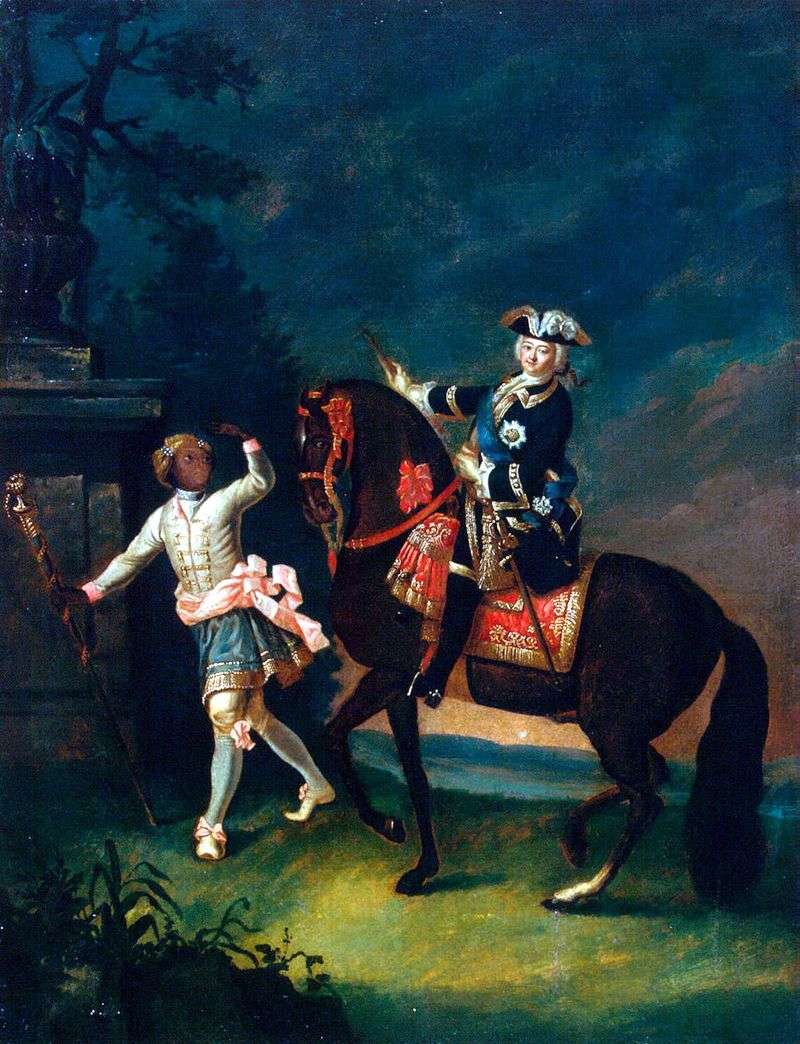
“Equestrian portrait of Empress Elizabeth Petrovna with Arapchonka”, performed by Groot in the year of his appearance in St. Petersburg, is an excellent work, showing how deserved was his rapid success. It is written in the Rococo style, which prevailed then in almost all of Western Europe and the northern capital of Russia. Rococo is primarily a court style, characterized by deliberate playfulness. Due to this, all its qualities are sharpened so much that they stand on the verge of transition into their opposite.
Finesse threatens to become sugary, tenderness, sugary, lightness – frivolity and frank eroticism. In this piquant fragility is its special charm. This small, chambered-by-format portrait depicts the Empress, who went on a horseback ride accompanied by a servant boy. Elizabeth Petrovna is dressed in the military uniform of the officer of the Preobrazhensky Regiment – the first regiment of the new regular Russian army, created by Peter I at the beginning of his reformatory activity.
A black arapchon accompanies a noble lady. Next to his dark face, his glistening black eyes, his blue-eyed mistress is still more tender, whiter, ruddy. Gestures and movements of the small servant are emphatically graceful. By their elegance they resemble the poses of ballet dancers. Black apricot in Russia in the XVIII century – a figure exotic, extraordinary. “Arapchonok”, discharged unusually as a doll, his costume – bright, fantastic, elegant, almost theatrical. He paves the way for the queen, moving elegantly, like dancing, and at the same time showing his admiration clearly – not only by imperial majesty, but also by women attractiveness of Elizabeth. The landscape background in the portrait is as conventional and decorative as the characters themselves. These leaning, leafy branches of trees of unknown breeds,
In the background – the image of the reservoir. It is a park pond with pleasure yachts, but, looking at the surface of the sea, there are associations with the sea spaces, and with the military fleet, whose founder was Elizabeth Petrovna’s father in Russia, Peter I. The background is a blue sky with clouds and a strip of pink dawn, above the water surface. Interestingly, this work was used for a sculptural group performed at Meissen Porcelain Manufactory in Germany.
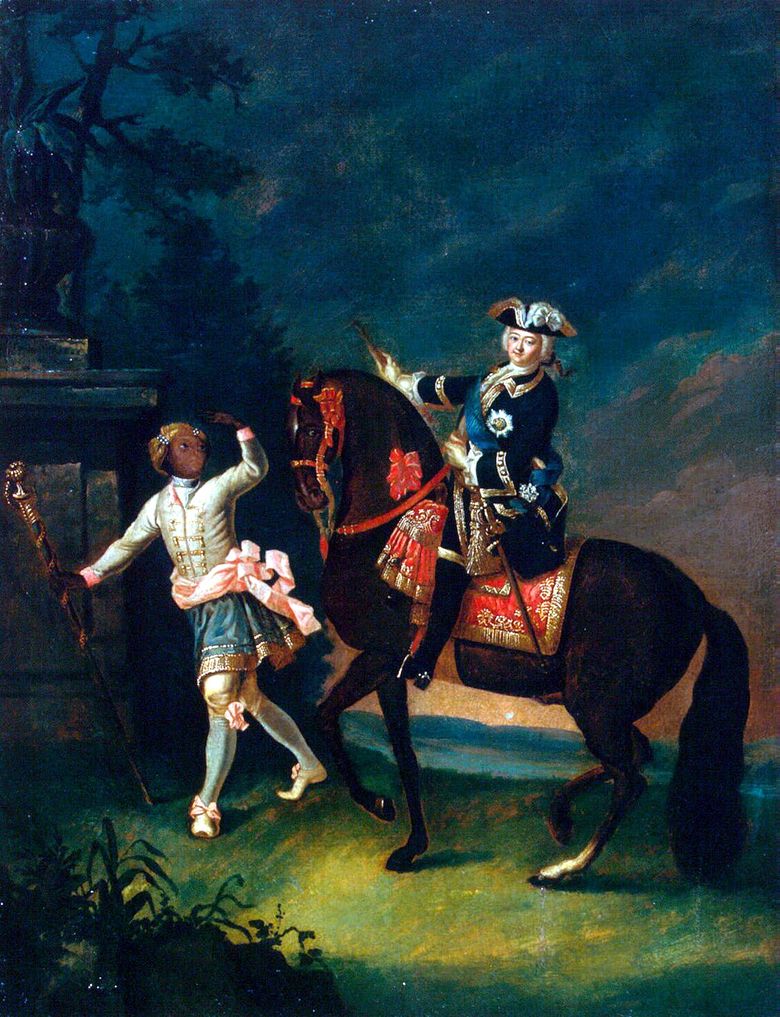 Portrait équestre d’Elizabeth Petrovna avec arachnochka – Georg Christopher Groot
Portrait équestre d’Elizabeth Petrovna avec arachnochka – Georg Christopher Groot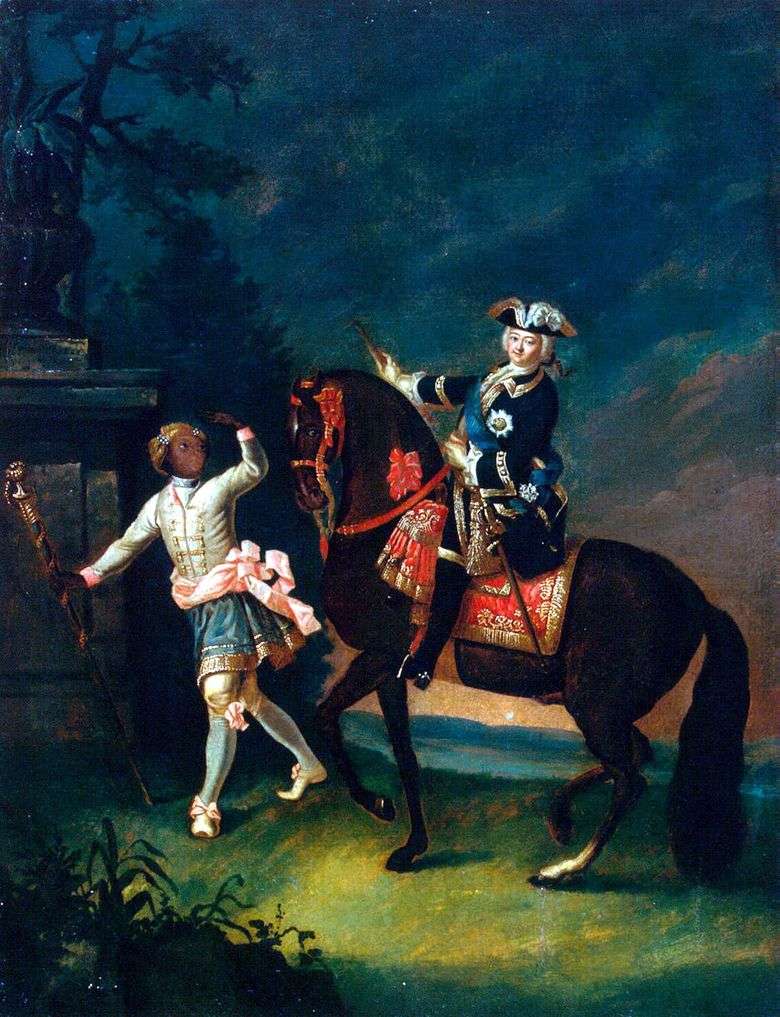 Retrato ecuestre de Elizabeth Petrovna con arapchon – Georg Christopher Groot
Retrato ecuestre de Elizabeth Petrovna con arapchon – Georg Christopher Groot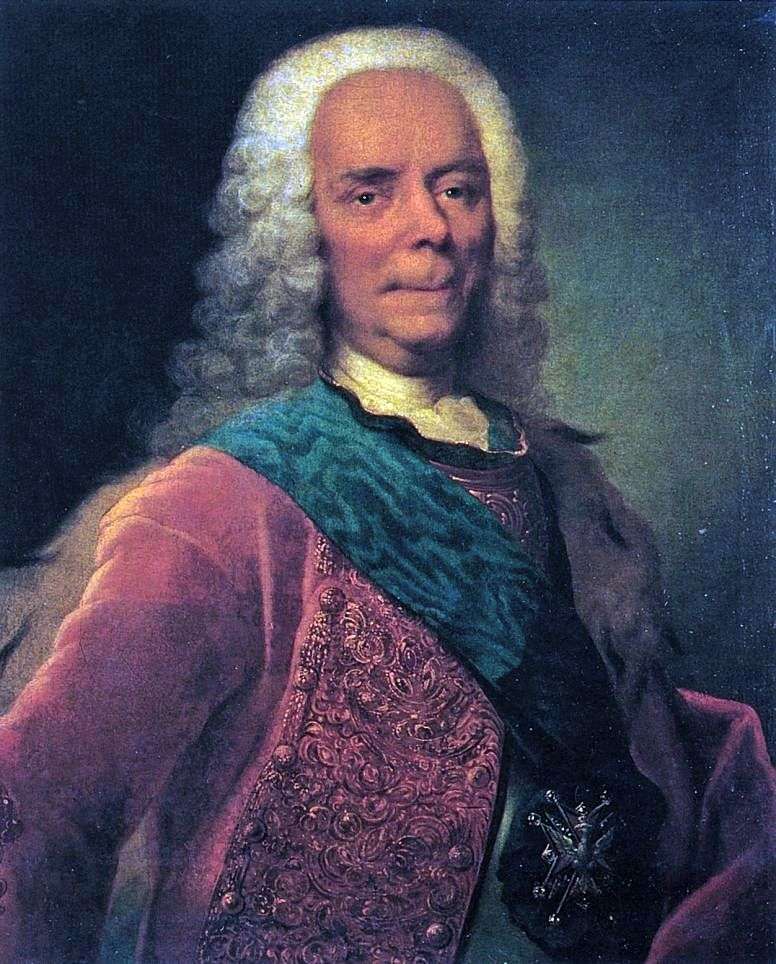 Portrait of Prince V. V. Dolgorukov by Georg Christopher Grooth
Portrait of Prince V. V. Dolgorukov by Georg Christopher Grooth Portrait of Elizabeth Petrovna
Portrait of Elizabeth Petrovna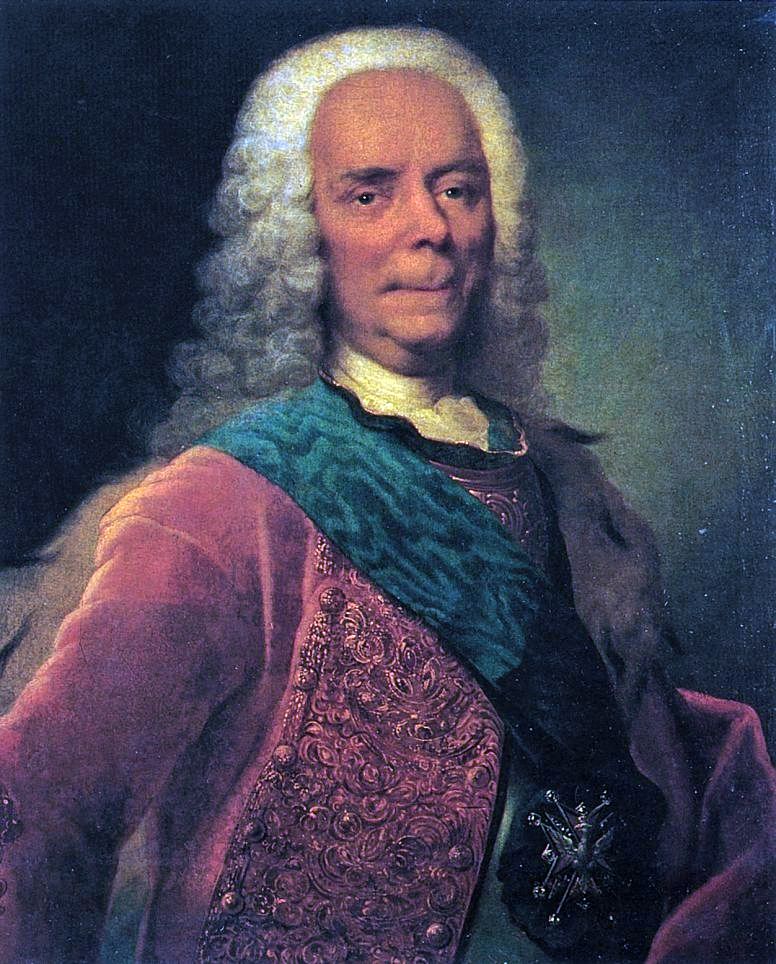 Portrait du Prince V. V. Dolgorukov – Georg Christopher Groot
Portrait du Prince V. V. Dolgorukov – Georg Christopher Groot Portrait of Elizabeth Petrovna as a Child by Ivan Nikitin
Portrait of Elizabeth Petrovna as a Child by Ivan Nikitin Portrait of princes Anna Petrovna and Elizabeth Petrovna by Louis Caravacq
Portrait of princes Anna Petrovna and Elizabeth Petrovna by Louis Caravacq Portrait de la princesse Anna Petrovna et Elizabeth Petrovna – Louis Caravac
Portrait de la princesse Anna Petrovna et Elizabeth Petrovna – Louis Caravac